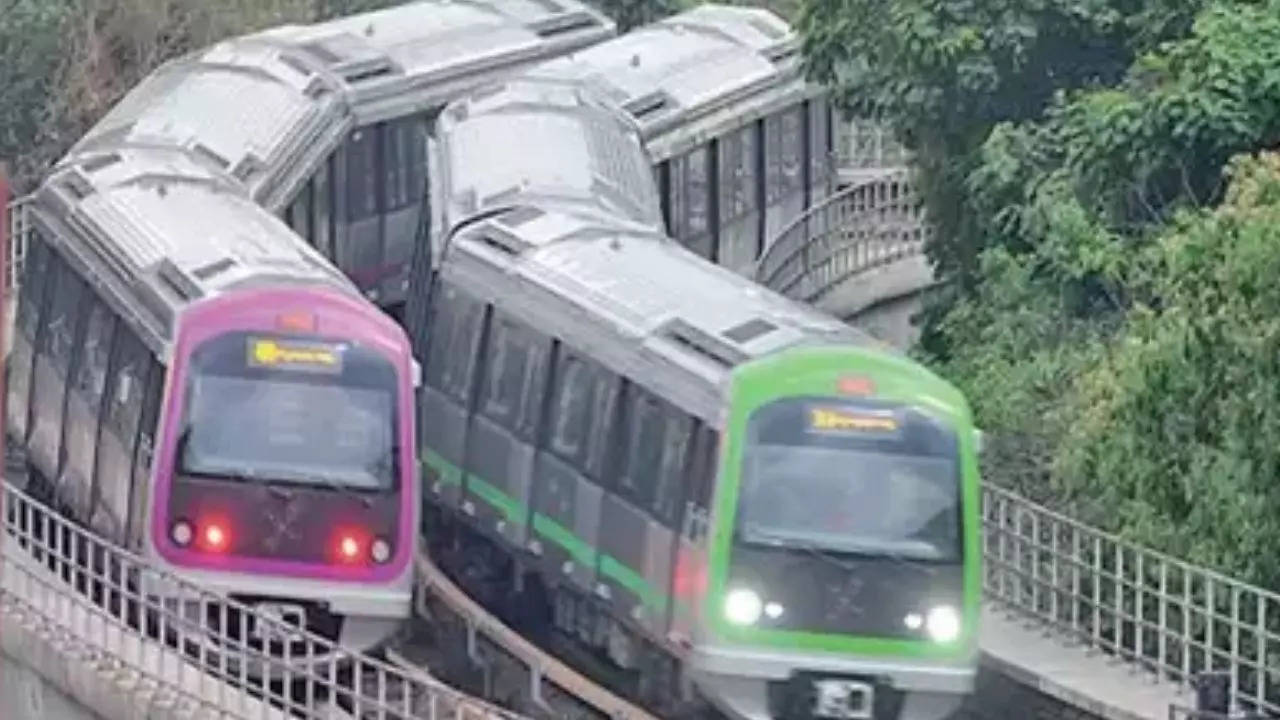 <span>file photo</span>
<span>file photo</span>This will allow advertisers to display high quality advertisements on the exteriors of trains running on Purple and green lineAs part of its strategy to increase non-fare revenues
Bangalore Metro Rail Corporation Limited ,BMRCL) has unveiled plans to feature outdoor advertising on its exterior metro train coaches As part of its strategy to increase non-fare revenues. The move will allow advertisers to display high quality advertisements on the exterior of trains purple line (Line 1) and Green Line (Line 2). BMRCL has issued a tender inviting bids from eligible advertising agencies for special protection advertising rights For a period of seven years.
“The initiative aims to harness the potential of outdoor advertising in Bengaluru’s busy metro network, thereby positioning the metro as a prime destination,” an official said. corporate brandingThis move is expected to not only boost BMRCL’s revenues but also enhance the aesthetic appeal of metro trains, providing advertisers a platform at par with world-class airports and other global metro systems.”
currently, Bengaluru Metro Operates 57 train sets, and the new advertising strategy will allow various corporate advertisements to be displayed on the exterior of the trains along with the Namma Metro logo. Advertisers will gain access to a highly visible, dynamic platform across the city, promising substantial exposure. This initiative comes after BMRCL’s previous advertising efforts, which were limited to digital and static advertisements inside metro stations and trains.
Before the High Court ban on outdoor advertisements within the Bruhat Bengaluru Metropolitan Municipality limits, BMRCL earned about Rs 10 crore annually through advertisements on metro pillars and bridges. Although this stream of revenue stopped due to the ban, advertisements in metro stations and within trains continued to contribute to non-fare revenue.
In financial year 2022-23, BMRCL is expected to earn Rs 422 crore from fare-box revenue and an additional Rs 171 crore from non-fare sources including advertising and fares. However, operating expenses during the same period stood at Rs 486 crore. To further increase revenues, BMRCL has also entered into long-term agreements with companies like Biocon and Infosys, which allows them to name metro stations after their brands for 30 years in exchange for substantial financial commitments.
Despite concerns from some passengers that advertisements may obscure the scenic views of the metro trains, BMRCL has assured that the windows will not be completely covered, maintaining the visual experience.
Passengers.
Apart from advertising, BMRCL continues to generate income through various other means, such as renting out space for ATMs, retail outlets, EV charging stations and network towers at metro stations. As BMRCL plans to expand its network from 73 kilometers to 175 kilometers by 2026 and to 317 kilometers by 2031, Metro officials estimate that outdoor advertising on train exteriors will provide crucial visibility for companies across Bengaluru.
financial performance
The financial performance of Bengaluru Metro has experienced significant ups and downs over the years. In 2013–2014, fare-box revenue was Rs 9.8 crore, while non-fare revenue was Rs 26 crore. Operating costs were significantly higher at Rs 48.7 crore, resulting in a cash loss of Rs 19.1 crore. Fare-box revenues covered only 20.1% of operating costs that year.
The positive trend continued in 2018-2019, as fare-box revenue grew by 26.3% to Rs 355 crore, while non-fare revenue increased to Rs 64.45 crore. Operating costs reached Rs 335.9 crore, resulting in a cash profit of Rs 87.39 crore, and fare-box revenue covered 105.7% of operating expenses. The COVID-19 pandemic severely impacted Bengaluru Metro’s revenues in 2020–2021, with fare-box revenue falling 86.9% to Rs 49.1 crore and non-fare revenue falling to Rs 37.5 crore. Operating costs, though reduced, were still Rs 294.2 crore, resulting in a significant cash loss of Rs 314.35 crore. Fare-box revenues cover only 16.7% of operating costs.
In 2021-2022, fare-box revenue grew by 232.5% to Rs 163.3 crore, while non-fare revenue increased to Rs 65.4 crore. By 2022-2023, fare-box revenue is projected to grow by 158.7% to Rs 422.6 crore, and non-fare revenue to reach Rs 171.4 crore. Operating costs rose to Rs 486.6 crore, but the system returned to profitability with a cash profit of Rs 9.2 crore, and fare-box revenue covered 86.9% of operating costs.

